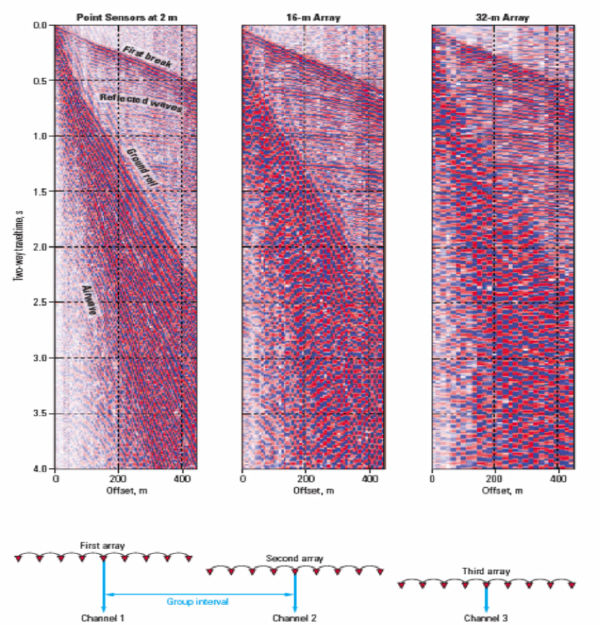Array Effects
Instead of recording single, non-overlapping shots into straight-line arrays, acquisition became one in which each shot was recorded by a line of receivers laid out on either side of the central shot. When receivers are laid out on only one side of a source, the resulting acquisition is said to be single ended. Figure 1 shows a typical single-ended acquisition, where a modern land vibrator provides the energy source causing the subsurface wavefield and its reflection. Receiver arrays record the response.
The bottom part of this figure shows how receiver arrays can be arranged and summed to produce a single trace. The output of this sub-array forces us to recognize that each trace can be affected by the array response. Although such arrays were supposed to reduce noise when it was not economically feasible to record the full output at each location, the mathematics says we should record and image using all receivers.
Array effects are rarely considered as part of the overall acquisition-data processing-imaging methodologies. In fact, the underlying mathematics is based on the assumption that each receiver is a so-called point receiver, but this assumption is wrong when an array is involved. Figure 2 demonstrates the smearing that arrays cause. The three images show the effect of recording every trace, a group of 8 traces, and a group of 16 traces. Note the considerable blurring caused by the mixing. While it appears to improve continuity and reduce noise, the net effect tends to be unwanted dip reduction.
Among other things, smearing can reduce the dip response of the recording system and thereby seriously decrease the quality of the ultimate image. Although it seems like a good idea to use arrays, and, when steep dips are not an issue, it seems to make sense, that is never really the case. The use of arrays is a fundamental violation of the mathematical assumptions in all cases. Today, it is probably possible to record all the receivers. The affect of any given array can be emulated in the processing stage, so applying it in the field seems to be unnecessary and it is perhaps a big mistake.


